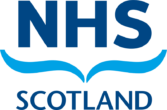FY Trainees
The FY requires the trainee to work to a set training plan under the supervision of nominated staff members. An example generic training schedule can be found by following the link. Note that precise timings will vary between centres, so please speak with local training coordinator to obtain specific documentation. The training plan will be prepared using a Minimum Deliverable Contents (MDC) document for each rotation. These serve as a guide to training supervisors and coordinators at each training centre, as a way of ensuring that the type and standard of training is consistent across the various training centres. They are an aid to the development of the training plans, and do not serve as a personal benchmark for trainees to work towards. The training plan itself is usually divided into weekly tasks, each requiring individual sign-off by both the trainee and the supervisor. A fully signed-off training plan is required to be completed before the trainee is considered to have completed the rotation.
Monitoring of progression during the FY is very important, and this assessed by a series of exercises that are essentially ‘building blocks’ of the training plan. Regular meetings with supervisors will be necessary to participate in tutorials (TUT), and case based discussions (CBD), and the supervisor is also expected to monitor direct observation of practical skills (DOPS) whenever practical work is undertaken. These meetings are an essential component of the training at this stage, and the training coordinator will be at hand to assist with any wider scale issues that may arise.
The portfolio at the end of the FY should be constructed to showcase ‘the best bits’ of the training experience throughout the year (to be submitted in early September). The portfolio has a prescribed length of 80 pages – which is then sub-divided into four lots of 17 pages for each major rotation, plus two lots of 6 pages for each minor rotation. For each rotation, a fully signed-off training plan is also included as evidence of the work completed. The portfolio is intended to be a ‘work book’ of the tasks that are completed for a specific rotation. It does not need to be a ‘glossy’ publication, and does not require detailed background material, introduction, theory etc (these aspects of the training will be validated by the signed-off training plan). The key to a good portfolio is to pick aspects of the training that are drawn from components of the clinical service work undertaken in the rotation area, that are also able to demonstrate strong elements of learning and understanding at the same time. Examples of useful portfolio material could be the results of a complex MRI safety assessment undertaken on a patient implant, a summary report of a survey conducted in an x-ray room, or an evaluation report of new software or a new piece of clinical engineering equipment. There are many training tasks that fulfil this brief, but it is recommended that the emphasis be on clinical service work that is required to be performed, as opposed to a basic element that is just done to form a simple training task alone.
The midway QA assessment involves a viva conversation (about 60-75 minutes) with a panel of three assessors (along with the External Training Advisor), convened to discuss the work that has been completed for all rotations. The discussion (chaired by the ETA) is usually centred on aspects of ‘the best bits’ of work that have been showcased within the portfolio, although questions may arise from any topic that has been covered within the training plan. The purpose of the midway QA is to provide assurance for both trainee and the SMPCETS that the training is on the correct trajectory to enable you to move onto specialism programme and eventually achieve STP equivalence. Although the midway process can be a little daunting to some, the assessment is intended to take the form of a scientific conversation between trainee and assessors – with questions being asked for reasons of genuine interest about the work that has been done. If the outcome of the midway QA is satisfactory then you will move into the specialism year, although certain remedial action planning may be required at this stage if any aspect of the training is considered to require further work. Guidance for trainees and also guidance for assessors (password protected) can be found in the Doc Store.
